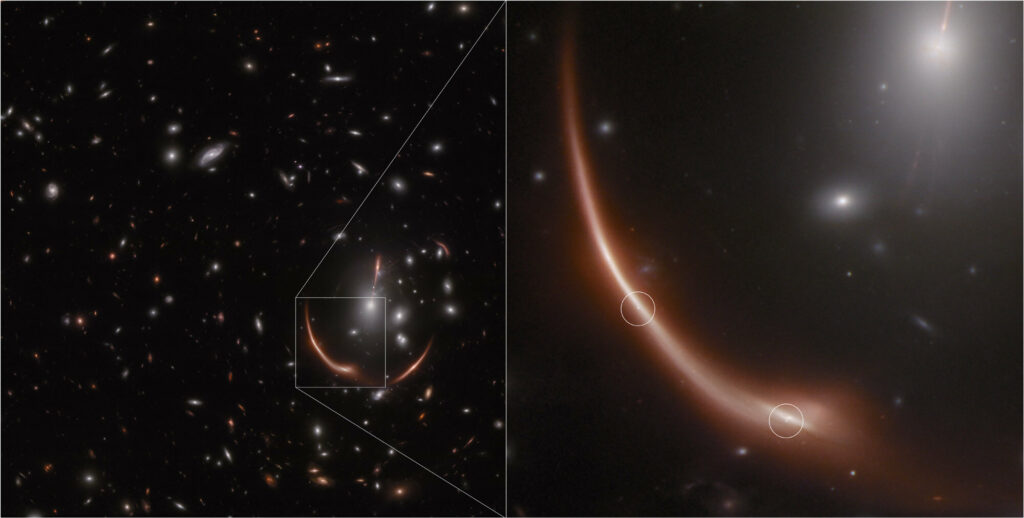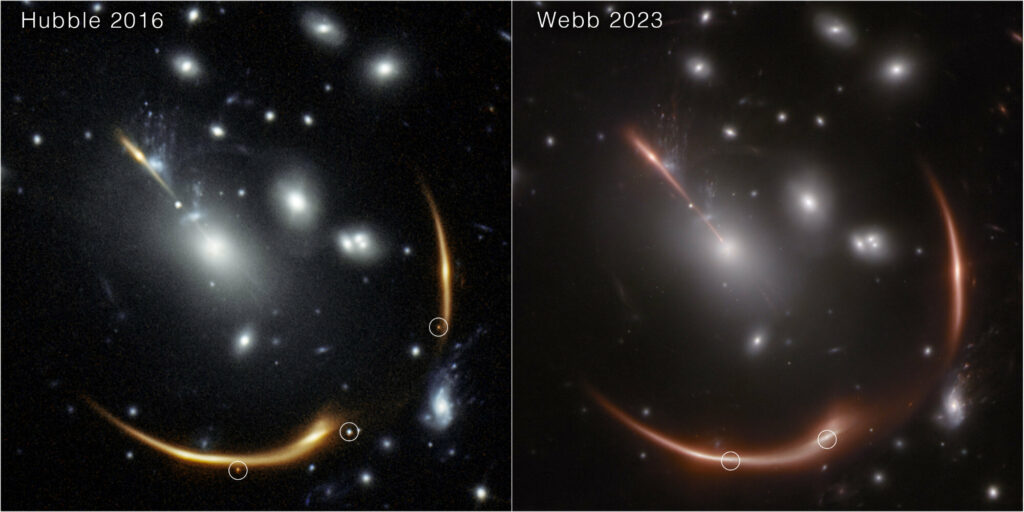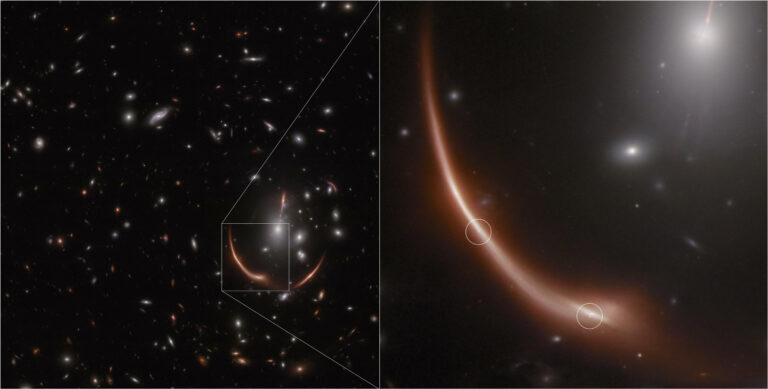“Webb Detects Another Lens-aided Supernova in a Remote Galaxy”
In November 2023, the James Webb Space Telescope observed MACS J0138.0-2155, a substantial galaxy cluster. Utilizing gravitational lensing, a phenomenon initially theorized by Albert Einstein, the telescope revealed the distortion of a remote galaxy named MRG-M0138 due to the intense gravitational influence of the intervening galaxy cluster.
Apart from distorting and amplifying MRG-M0138, MACS J0138’s gravitational lensing generated five distinct images of the distant galaxy.
In 2019, astronomers unveiled a remarkable discovery—evidence of a stellar explosion, or supernova, within MRG-M0138. This revelation stemmed from images captured by NASA’s Hubble Space Telescope in 2016.

Upon scrutinizing the 2023 Webb images, a separate team of astronomers made a startling revelation—a second supernova within the same galaxy, occurring seven years later. Justin Pierel, a NASA Einstein Fellow at the Space Telescope Science Institute, and Andrew Newman, a staff astronomer at the Observatories of the Carnegie Institution for Science, elaborate on the unprecedented discovery of two gravitationally lensed supernovae within a single galaxy.Explaining the phenomenon, Pierel and Newman liken it to multiple trains departing from a station simultaneously, all moving at the same speed towards the same destination.
However, due to varied routes, trip durations, and terrains, the trains don’t reach their destination simultaneously. Similarly, when a supernova detonates behind a gravitational lens, its light follows distinct paths, and the resulting images reach astronomers over days, weeks, or even years.
The temporal disparities in the appearance of gravitationally lensed supernova images offer a unique opportunity for measuring the expansion history of the universe, known as the Hubble constant—a significant cosmological challenge. Despite the potential insights, these multiply imaged supernovae are exceptionally rare, with fewer than a dozen instances detected thus far.

Among the exclusive cohort, the 2016 supernova in MRG-M0138, dubbed Requiem, distinguished itself for several notable reasons. Firstly, its location was an impressive 10 billion light-years away. Secondly, the supernova belonged to the Ia type, commonly used as a “standard candle” for gauging cosmic distances.
Adding to its uniqueness, models predicted a delay in one of the supernova images due to its trajectory through the intense gravity of the cluster. This delayed image was anticipated to become visible only in the mid-2030s. Regrettably, Requiem’s discovery occurred in 2019, well after its fading, preventing the collection of sufficient data to calculate the Hubble constant at that time.Now, a second gravitationally lensed supernova, named Supernova Encore, has been identified within the same galaxy as Requiem.
Encore’s discovery was serendipitous, prompting active monitoring through a time-critical director’s discretionary program. The utilization of Webb images will enable the measurement and confirmation of the Hubble constant based on this multiply-imaged supernova. Both Encore and Requiem are verified as standard candle or type Ia supernovae, establishing them as the most distant pair of standard-candle supernova “siblings” ever uncovered.While supernovae are typically unpredictable, the planned observations around 2035 will capture the final displays of Requiem and Encore in the infrared spectrum, providing a novel and precise assessment of the Hubble constant.
This article is republished from PhysORG under a Creative Commons license. Read the original article.
Do not forget to share your opinion with us to provide you with the best posts !





0 Comments